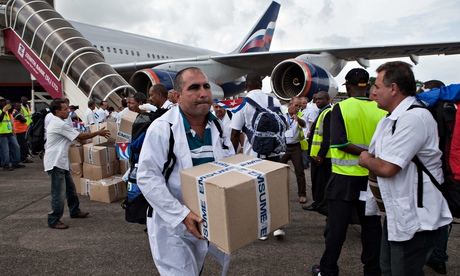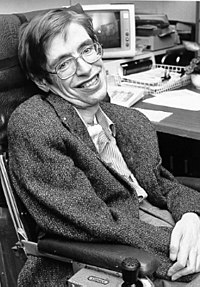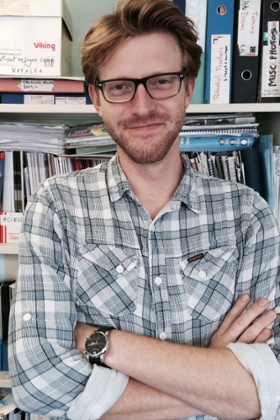Páginas vistas
viernes, 31 de octubre de 2014
jueves, 30 de octubre de 2014
Cuba against Ebola
Cuba leads fight against Ebola in Africa as west frets about border security
The island nation has sent hundreds of health workers to help control the deadly infection while richer countries worry about their security – instead of heeding UN warnings that vastly increased resources are urgently needed
- Monica Mark in Lagos
- The Observer,

As the official number of Ebola deaths in west Africa’s crisis topped 4,000 last week – experts say the actual figure is at least twice as high – the UN issued a stark call to arms. Even to simply slow down the rate of infection, the international humanitarian effort would have to increase massively, warned secretary-general Ban Ki-moon.
“We need a 20-fold resource mobilisation,” he said. “We need at least a 20-fold surge in assistance – mobile laboratories, vehicles, helicopters, protective equipment, trained medical personnel, and medevac capacities.”
But big hitters such as China or Brazil, or former colonial powers such France and the UK, have not been stepping up to the plate. Instead, the single biggest medical force on the Ebola frontline has been a small island: Cuba.
That a nation of 11 million people, with a GDP of $6,051 per capita, is leading the effort says much of the international response. A brigade of 165 Cuban health workers arrived in Sierra Leone last week, the first batch of a total of 461. In sharp contrast, western governments have appeared more focused on stopping the epidemic at their borders than actually stemming it in west Africa. The international effort now struggling to keep ahead of the burgeoning cases might have nipped the outbreak in the bud had it come earlier.
André Carrilho, an illustrator whose work has appeared in the New York Times and Vanity Fair, noted the moment when the background hum of Ebola coverage suddenly turned into a shrill panic. Only in August, after two US missionaries caught the disease while working in Liberia and were flown to Atlanta, did the mushrooming crisis come into clear focus for many in the west.
“Suddenly we could put a face and a name to these patients, something that I had not felt before. To top it all, an experimental drug was found and administered in record time,” explained the Lisbon-based artist. “I started thinking on how I could depict what I perceived to be a deep imbalance between the reporting on the deaths of hundreds of African patients and the personal tragedy of just two westerners.”
The result was a striking illustration: a sea of beds filled with black African patients writhing in agony, while the media notice only the single white patient.
“It’s natural that people care more about what’s happening closer to their lives and realities,” Carrilho said. “But I also think we all have a responsibility to not view what is not our immediate problem as a lesser problem. The fact that thousands of deaths in Africa are treated as a statistic, and that one or two patients inside our borders are reported in all their individual pain, should be cause for reflection.”
With the early alarm bells ignored, the handful of international health agencies which did act were quickly overwhelmed, allowing Ebola to slip across the border of Guinea and gather pace in Liberia and Sierra Leone.
The sentiment behind Carrilho’s illustration neatly encapsulates a renewed media frenzy now that as two cases have been imported into the US, and a Spanish nurse infected over the past month.
“What I’d like to see is a little less hysteria in the US and the UK,” said Andrew Gleadle, programme director for the International Medical Corps (IMC), which recruits health personnel for global humanitarian disasters, as he snatched a breather between shifts in Sierra Leone. “We may get a few isolated cases [in the west] but we’re not going to get an epidemic. We need more focus on west Africa where the real problem is.”
The WHO estimates Sierra Leone alone needs around 10,000 health workers. Médecins sans Frontières, the international medical aid charity which has led efforts from the beginning, has about 250 staff on the ground in the affected countries. The second-largest government brigade is from the African Union, which is dispatching about 100 health workers.
It’s not the first time Cuba has played an outsized role in a major disaster. Its government may be beset by allegations of human rights abuse, but its contribution to relief brigades is unrivalled: currently, some 50,000 Cuban-trained health workers are spread over 66 countries. Cuba provided the largest medical contingent after the Haiti earthquake disaster in 2010, providing care to almost 40% of the victims. And while some 400 US doctors volunteered in the aftermath of that quake, fewer than 10 had registered for the IMC’s Ebola effort, the organisation said.
Sierra Leone president Ernest Bai Koroma personally welcomed the Cuban delegation in the capital Freetown. “This is a friendship that we have experienced since the 1970s and today you have demonstrated that you are a great friend of the country,” he said as they gathered in a room draped with the Cuban flag.
In August 1960, Che Guevara, a former doctor, dreamed of a world in which every medic would “[utilise] the technical knowledge of his profession in the service of the revolution and the people”. Thus began a history of service in some the world’s poorest and most forgotten states.
The island nation began forging links with the continent during the 1960s, when Cuban soldiers fought alongside southern Africa’s liberation fighters. Guevara personally pitched into the brutal battlefields of the newly independent Democratic Republic of Congo, but after becoming suspicious about rebel leaders’ motives, suggested they replaced fighters with medical aid.
Ties deepened in the 1970s as Africa’s newly independent nations flirted with socialism, and aligned themselves with the communist state who opposed their former colonial rulers. Teachers, doctors and soldiers from Cuba poured into 17 African countries.
Today, fading signposts with Spanish street names, peeling posters with improbable slogans (“Viva la revolución siempre!” – long live the revolution, always – says one in Freetown) and a love of salsa musicremain across much of west Africa.
But help will soon be coming from places other than Cuba. The US will pour in $400m, plans to build at least a dozen 100-bed field hospitals using some 4,000 troops, and has deployed 65 health officials to Liberia. Japan, the world’s fourth-richest nation, has pledged $40m and India $13m. China has chipped in around $5m, as well as a Chinese-built and staffed mobile clinic in Sierra Leone.
But even if efforts to roughly double the current bed capacity of about 1,000 in Liberia, Guinea and Sierra Leone succeed, these facilities will still lack the health personnel needed to staff them.
In part, slow staff recruitment is down to the high number of medics who have already been infected, hovering around 300 so far.
“Even if you know what you’re doing, people make mistakes. It’s very, very difficult to wear those suits in hot weather,” said Chikwe Ihekweazu, an epidemiologist who worked with the WHO during the 2004 outbreak in Sudan, where temperatures can soar up to 42C.
“A lot of health workers died in the beginning and that obviously had an impact on recruitment. But the rates have fallen, and what that shows is that health workers can learn, with the correct training in infection control.”
Others are also hopeful that staff numbers will increase. Gleadle, of the IMC, said the slow pace at which centres were being scaled up might actually draw in more volunteers in the long run.
He said: “Even if we have a 100-bed centre, you wouldn’t fill them up in one day. You start slowly, then take a deep breath and escalate over time. I think as we build more treatment centres and hopefully none of our workers fall ill because we’re going slowly, that will encourage others.”
And he pointed out that there would be a silver lining, of sorts, as the disease marched on. “One way to see a positive side is that it means there are more survivors with immunity. They can then be very, very valuable in going back to their communities to educate others and help, without that risk of falling sick again.”
miércoles, 29 de octubre de 2014
ONU contra el bloqueo a Cuba
| Votaciones en ONU contra bloqueo evidencian aislamiento de EE.UU |  |  |  |
 La Habana, 29 oct (PL) Las votaciones en ONU contra el bloqueo económico que Estados Unidos mantiene sobre Cuba evidencian el aislamiento internacional casi unánime en que hoy se encuentra Washington, afirmó el Subdirector de Asuntos Multilaterales de la cancillería, Pedro Luis Pedroso. La Habana, 29 oct (PL) Las votaciones en ONU contra el bloqueo económico que Estados Unidos mantiene sobre Cuba evidencian el aislamiento internacional casi unánime en que hoy se encuentra Washington, afirmó el Subdirector de Asuntos Multilaterales de la cancillería, Pedro Luis Pedroso.
Recordó que este documento se presentó en 1992 y solo votaron a favor 59 países y la votación estuvo muy circunscripta a la región de Latinoamérica y no llegaba a expresar un respaldo universal, como ocurre actualmente. Apuntó que además concentraba el voto africano y muy pocos países desarrollados votaron por la misma. En el 1994 la Unión Europea votó como conjunto, lo que marcó un salto, pues esa fue la época más difícil de la economía cubana, puntualizó Pedroso. Destacó el 2010 como otro momento importante pues el debate va a la sesión vespertina de la Asamblea General de la ONU, lo cual es reflejo de la necesidad de los Estados de expresar su posición en ese contexto. También comenzó a acentuarse la tendencia de incrementar la discusión de ese tema dentro de los grupos regionales como el G-77, Caricom, los países no alineados y los africanos. Precisó que a partir de ese momento hay un conjunto de grupos de esa índole que plasman su consenso contra el bloqueo a través de resoluciones. La Comunidad de Estados Latinoamericanos y Caribeños se incorpora en 2012 y es expresión del consenso de esta región, señaló. Comentó que en la historia de las votaciones Estados Unidos no ha alcanzado más de cuatro votos lo cual dice mucho de su aislamiento del concierto multilateral que ha crecido a partir de los pronunciamientos que se adoptaron en foros internacionales, cumbres iberoamericanas, entre otros. Hoy se verifica que esa política es obsoleta, afirmó el especialista. tgj/nda |
martes, 28 de octubre de 2014
CDS´s New Ebola Risk Categories
“I understand that people are afraid. Ebola is unfamiliar. It is a severe disease. But it is not highly contagious and it requires direct contact with someone who is sick from Ebola or with their body fluids,” Frieden said.
Frieden said fewer than 100 people a day had been returning from Ebola-affected countries since new guidelines went into effect Oct. 11. Of the 807 people who entered the U.S. since then, 46 have been identified as health care workers.
The new categories:
High-risk - Includes people with very risky exposures such as nurses stuck with a needle that had been used on an Ebola patient or doctors splashed in the face with infectious bodily fluids. These people should have direct, active, daily monitoring and stay away from public areas and public transport.
Some risk - People in close contact with a patient without protective gear. These people should be monitored and common sense should be used in restricting movement.
Low risk - Travelers to an affected country or people who were near a patient but didn't care for him while he has symptoms or caregivers who wore protective gear. They should be monitored for symptoms but not restricted in any way.
No risk - People in contact with a patient before she showed symptoms or who traveled to an affected country more than 21 days ago. There is no need to monitor these people at all
lunes, 27 de octubre de 2014
Stephen Hawking on Facebook

Stephen Hawking's Facebook page has experienced a big bang of followers, reaching nearly 900,000 in a couple of weeks. Now the most famous theoretical physicist since Albert Einstein has a message for his fans:
"I greatly enjoyed the STARMUS festival. It is a combination of science and rock music, both of which I love. I was interested in the talks by the astronauts and why the Soviet Union didn’t beat Neil Armstrong to the Moon. I will have to read the transcript, because I didn’t understand the translation. I enjoyed hearing how Bob Wilson eliminated pigeons, they thought the microwave background was caused by pigeon droppings, and Richard Dawkins on alien life. Some people say I’m an alien myself, with my robot voice.I have always wondered what makes the universe exist. Time and space may forever be a mystery, but that has not stopped my pursuit. Our connections to one another have grown infinitely and now that I have the chance, I’m eager to share this journey with you. Be curious, I know I will forever be.Welcome, and thank you for visiting my Facebook Page. -SH
I hope there is a STARMUS next year, and you invite me. -SH "
Hawking, of course, is most famous for his work with black holes and the Big Bang. In November, he is getting the Hollywood treatment with "The Theory of Everything," a movie detailing his first marriage and his early battles with amyotrophic lateral sclerosis (ALS). His first Facebook message garnered a "Like" from his employer, the University of Cambridge, which added, "Nice to see you here Stephen Hawking."
Vatican Library on-line
Fiat lux! The Vatican Library has spent the past seven months digitizing thousands of historical manuscripts, and the first documents appeared online this week for free viewing.
The Vatican announced the massive project in March, and Business Insider spotted the first batch of documentsreleased online. Japanese technology firm NTT Data has been working with the library to scan and digitally archive about 1.5 million pages from the library's collection of 82,000 manuscripts dating from the origins of the Church to the 20th century. The initial partnership with NTT Data will take about four years, and it may be extended.
The project offers a featured collection page and also lets users browse through all documents that are currently available to view, which include not only manuscripts but scans of Chinese woodcuts and ancient coins. As of Friday morning eastern time, the project's site said 4,415 items have been digitized so far.
domingo, 26 de octubre de 2014
GlaxoSmithKline Vaccine Against Ebola
The GlaxoSmithKline vaccine has already performed well in animal trials, providing macaque monkeys with 100% protection against Ebola for up to 10 months. But our immune system is very different from that of macaques and, to date, no vector-based vaccine has been licensed for any disease in humans. That is why scientists are proceeding with caution and testing the vaccine in different concentrations in order to ascertain the lowest dose that will elicit an immune response.
“The big question is, will the immune responses that we generate with the vaccine be strong enough?” says Professor Adrian Hill, the director of the Jenner Institute. “That’s always a question with new vaccines.”

It is a question to which Nick Owen, who works as an editorial and social media co-ordinator at MSF’s London office, is keen to know the answer. Earlier this month he became one of the first volunteers to receive the vaccine. He felt a bit “flu-ey” the day after the injection, but otherwise the only discomfort is giving blood once a month so that his antibody levels can be measured. (From "The Guardian")
Fukushima SOS
TOKIO, octubre 22. — La empresa operadora de la planta nuclear de Fukushima, Tokyo Electric Power (TEPCO), limpiará los escombros restantes de la explosión de hidrógeno ocurrida en 2011 y aspira a descargar el combustible gastado que se almacena dentro de una piscina en el recinto a finales de marzo del año 2018.
Para ello inició este martes los preparativos para desmontar la cubierta del reactor, reporta Telesur.
En este proceso TEPCO realizará agujeros en el techo y rociará productos químicos para fijar el polvo que tapiza el edificio y evitar la propagación de partículas radiactivas por el aire una vez que se levante el revestimiento de poliéster, operación que entrará en una etapa masiva a partir de marzo del 2015.
Sin embargo dentro del proceso restan etapas como el retiro de uranio semifundido de la unidad de fusión, cuyo interior es de acceso restringido debido a los altísimos niveles de radiación que emite.

Vista aérea de la Central de Fukushima
Se estima que el desmantelamiento de los reactores nucleares de Fukushima pueda extenderse por lo menos entre 25 y 35 años gracias a la complejidad de cada etapa y los altos riesgos personales que asumen las personas encargadas del proceso.

Lea además Fukushima, la crisis que no termina
Suscribirse a:
Comentarios (Atom)
 Washington, 31 oct (PL) Matt Bissonnette, exmiembro de la Armada de Estados Unidos que escribió un libro sobre la incursión secreta que provocó la muerte al cabecilla de Al-Qaeda, Osama Bin Laden, está hoy bajo investigación penal por divulgación de material clasificado.
Washington, 31 oct (PL) Matt Bissonnette, exmiembro de la Armada de Estados Unidos que escribió un libro sobre la incursión secreta que provocó la muerte al cabecilla de Al-Qaeda, Osama Bin Laden, está hoy bajo investigación penal por divulgación de material clasificado.